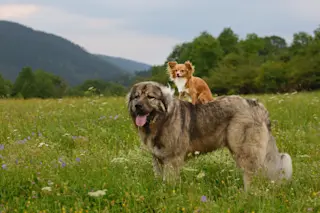In the animal kingdom, the general rule is the larger you are the longer you live. Elephants and whales are some of the longest living groups of animals on the planet, and they are respectively the largest organisms on land and in the ocean. Conversely, mice, and other rodents tend to experience much shorter lifespans.
However, one strange counterexample is the contrast in lifespan among different sized dog breeds. It is well-known that large dogs don’t live as long as their smaller relatives. For example, mastiffs, weighing up to 230 pounds, live for 6 to 10 years, while chihuahuas, which never weigh more than 6 pounds, live for 14 to 16 years (data from the American Kennel Club).
There is also a deeper paradox to the concept of aging, says Jack da Silva from the Department of Molecular and Biomedical Science at the University of Adelaide. “Surely it is much ...















